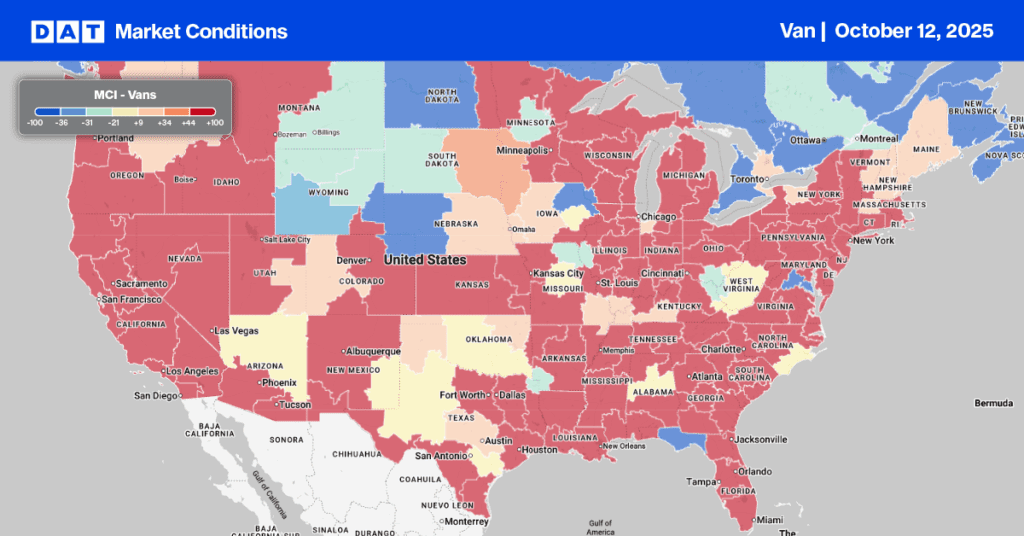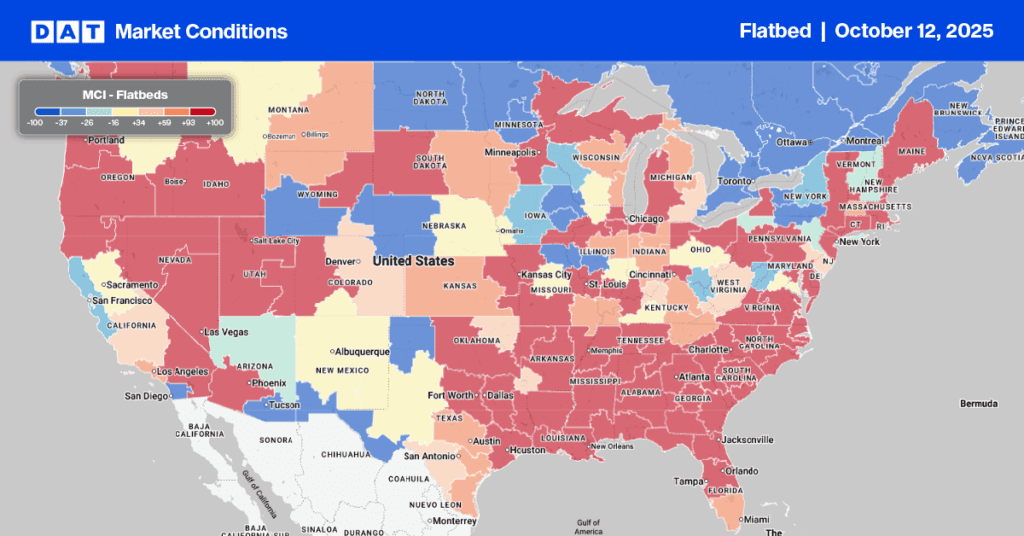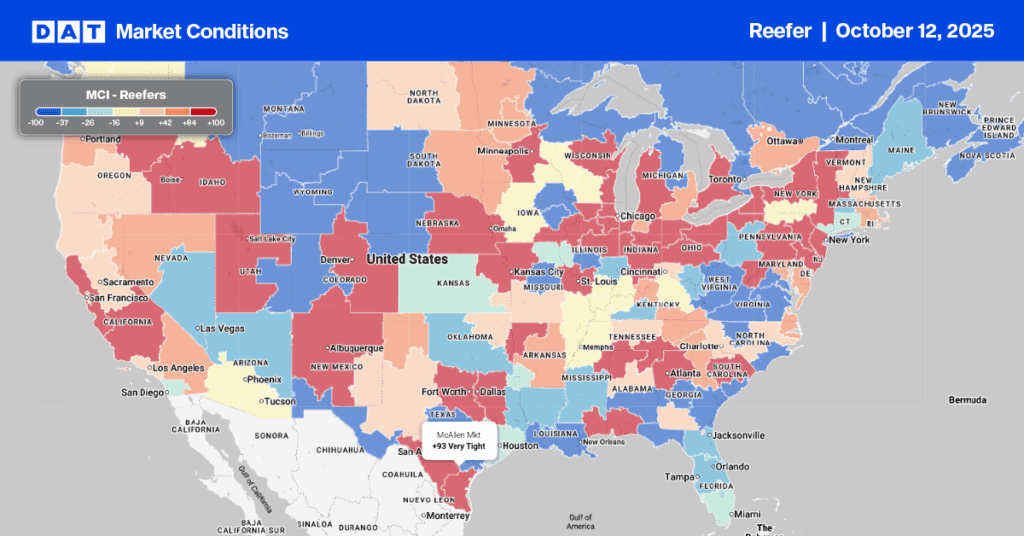Each year Vidalia Onion devotees eagerly await the announcement of the “pack date” – the time shoppers will soon be able to purchase the product.
The date is determined each year by the Vidalia Onion Committee (VOC), composed of industry members, agriculture scientists and the Department of Agriculture based on soil and weather conditions in South Georgia. This year’s pack date is set for April 16 and usually runs through to the end of August.
This season’s crop of 9,400 acres in 21 Georgia counties represents about 40% of the sweet onion market in the U.S., with the ‘Vidalia Onion’ trademarked and owned by the state of Georgia because of the Vidalia Onion Act of 1986.
Get the clearest, most accurate view of the truckload marketplace with data from DAT iQ.
Tune into DAT iQ Live, live on YouTube or LinkedIn, 10am ET every Tuesday.
The U.S. imports around 13% of annual onion tonnage – with 56% of that from Mexico and 38% from Peru. Mexico shipping volumes peak in March and usually run through to the end of June, when the Peru season ramps up and continues all the way through to March.
In the U.S., onions grow in or near many of the same regions as potatoes, so it’s no surprise to see states including Washington, Idaho, Oregon and California at the top of the list. Washington state produced around 29% of the annual crop in 2020, according to the USDA, followed by Idaho (16%), Oregon (14%) and California (11%).
Georgia ranks number seven with an annual market share of 4%. Unlike other states, it has a much shorter 16-week shipping season from now until August. In the Pacific Northwest (PNW), onions ship from August until March or April. In between the Georgia and PNW onion season, New Mexico and California reach their harvest peak, providing a constant year-round supply of onions for the U.S. market.
What’s so special about the Vidalia onion?
“Vidalia onions play a huge role in our spring and summer recipes and feature prominently in our triple Onion quiche, lamb and marinades,” expert chefs Donna German and Visnja Zarak from Hostess Catering told DAT. “This go-to onion fits the bill with its delicate aroma and mild sweetness, and unlike its white and red counterparts, we find we can add the Vidalia to a marinated slaw or salad with fennel and dill for a delicious side.”
Demand for temperature-controlled equipment is already high
In transit, onions require refrigeration most of the year. Even though you can haul them in vented vans and on flatbeds in colder months, as soon as the ambient temperature gets above 50 degrees Fahrenheit, a reefer is required. The most common reefer setpoint seems to be between 35 and 40 degrees, but different varieties and growers have different requirements.
Reefer capacity is already tight in most markets, with spot rates expected to heat up all the way through the spring and summer produce shipping seasons. Even though total truckload volumes of produce are down around 28% compared to last year, according to the USDA, volumes are expected to make a big comeback this summer, as restaurants begin to reopen and regulations around social gatherings are relaxed.
From a freight market perspective, we’re at the starting line for the 2021 produce season, which begins in Georgia and parts of South Carolina. What follows is a chain reaction for higher reefer demand over the next three months.
The Vidalia onion in Georgia season overlaps with the peach season in South Carolina, setting up a situation where capacity begins to tighten at the start of April each year and then extends right through to the July 4th holiday break. With the exception of 2020, spot rates for outbound loads from South Carolina and Georgia increase by $0.70/mile on average during this 13-week period and over the last five years have averaged $2.72/mile (excluding fuel) by the time Independence Day rolls around.
Reefer outbound spot rates from these two states have already been averaging $2.93/mile in recent weeks, which places the previous high of $3.35/mile in July 2018 well within reach. The Ratecast predictive model from DAT iQ is already forecasting spot rates will be around $3.16/mile, excluding FSC, for reefer loads from Columbia, SC, to Chicago, and $4.27/mile to New York City.
This is shaping up to be quite the produce season for all players.


